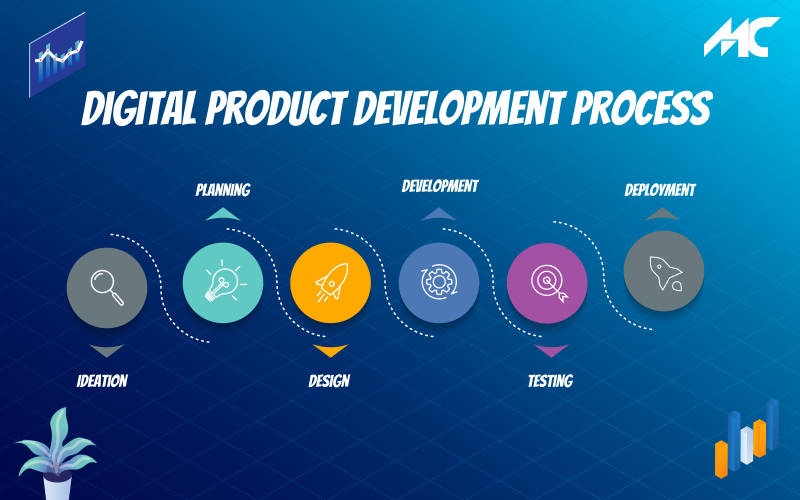A Guide to Digital Product Development: Benefits, Process, and Trends
Editorial Team December 21, 2023Certainly! Developing a digital product involves creating software or online services to meet specific user needs or address particular challenges. Whether you’re working on a mobile app, a web platform, or any other digital solution, here is a guide to digital product development, covering its benefits, process, and current trends:

Certainly! Developing a digital product involves creating software or online services to meet specific user needs or address particular challenges. Whether you’re working on a mobile app, a web platform, or any other digital solution, here is a guide to digital product development, covering its benefits, process, and current trends:
Benefits of Digital Product Development:
-
Global Reach: Digital products can be accessed and used globally, allowing businesses to reach a broader audience.
-
Cost-Effectiveness: Compared to traditional product development, creating digital products often involves lower initial costs and can be more scalable.
-
Rapid Prototyping: Digital products can be prototyped and tested quickly, allowing for faster iterations and improvements based on user feedback.
-
Data-Driven Decision Making: Digital products generate valuable user data, enabling businesses to make informed decisions and enhance user experiences.
-
Automation: Digital products can automate processes, reducing manual effort and increasing efficiency.
-
Continuous Updates: Digital products can be easily updated and improved over time, ensuring they stay relevant and competitive.
Digital Product Development Process:
-
Idea Generation:
- Identify a problem or a need in the market.
- Brainstorm and generate ideas for a digital solution.
-
Market Research:
- Analyze the target audience.
- Assess the competition and market demand.
-
Conceptualization:
- Define the core features and functionalities.
- Create wireframes and prototypes.
-
Design:
- Develop the user interface (UI) and user experience (UX) design.
- Create a visual style guide.
-
Development:
- Write code and build the product.
- Test the product for functionality, performance, and security.
-
Testing:
- Conduct thorough testing, including unit testing, integration testing, and user acceptance testing.
-
Launch:
- Deploy the product to the market.
- Implement marketing and promotion strategies.
-
Post-Launch Support:
- Provide ongoing support and maintenance.
- Address user feedback and make continuous improvements.
Trends in Digital Product Development:
-
Artificial Intelligence (AI) and Machine Learning (ML):
- Integration of AI and ML for enhanced user experiences and personalized recommendations.
-
Blockchain Technology:
- Increasing use of blockchain for secure transactions and data management.
-
Internet of Things (IoT):
- Connecting devices and creating smart ecosystems for seamless user experiences.
-
Progressive Web Apps (PWAs):
- Development of web applications that offer a native app-like experience.
-
Voice Interface and Chatbots:
- Integration of voice commands and AI-driven chatbots for improved user interactions.
-
Augmented Reality (AR) and Virtual Reality (VR):
- Use of AR and VR for immersive and interactive experiences.
-
Cybersecurity Focus:
- Heightened emphasis on cybersecurity measures to protect user data.
-
Low-Code/No-Code Development:
- Adoption of platforms that enable development with minimal coding, accelerating the development process.
By staying informed about these trends and following a structured development process, businesses can create successful and innovative digital products that meet the evolving needs of users and the market.

